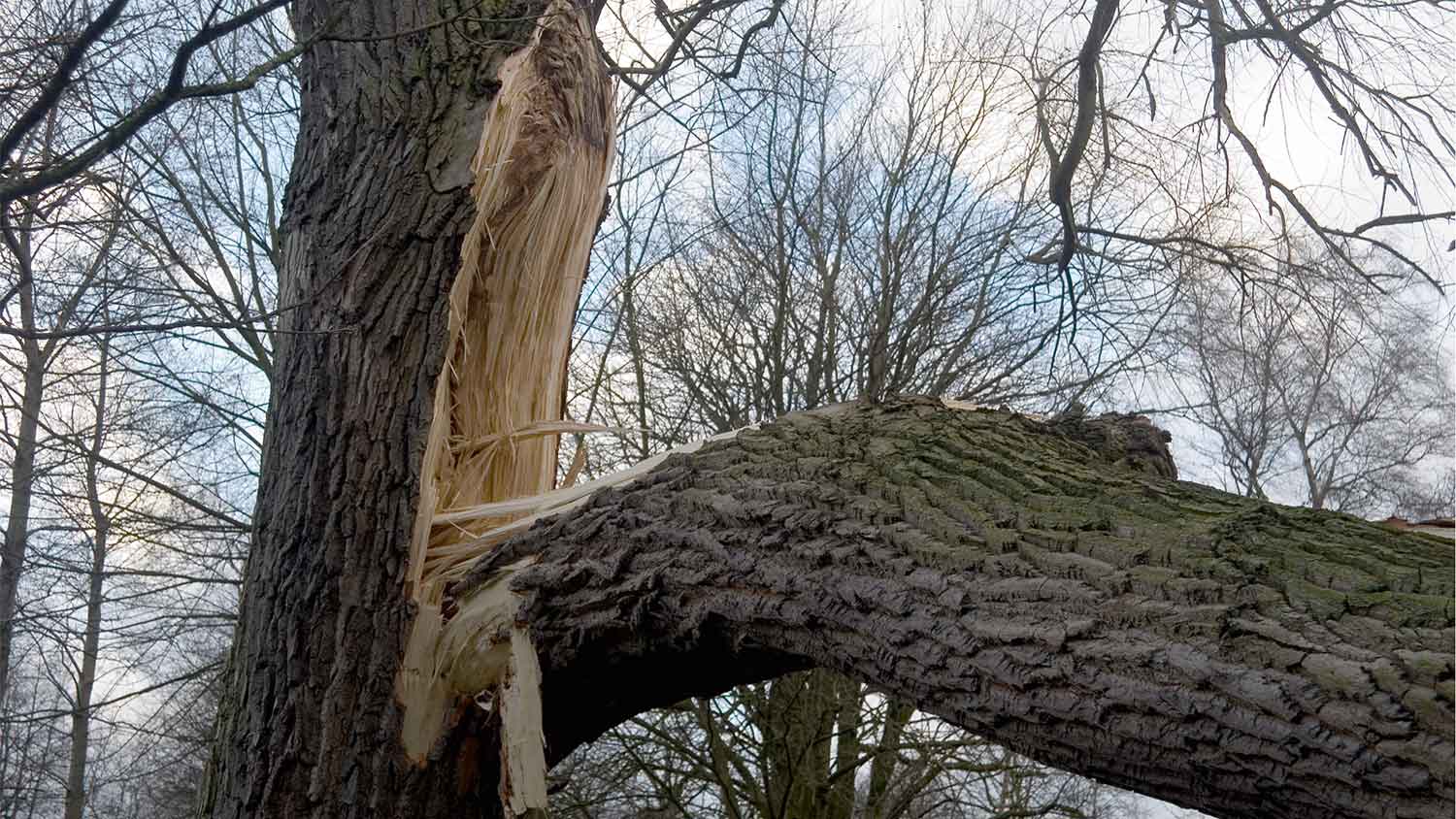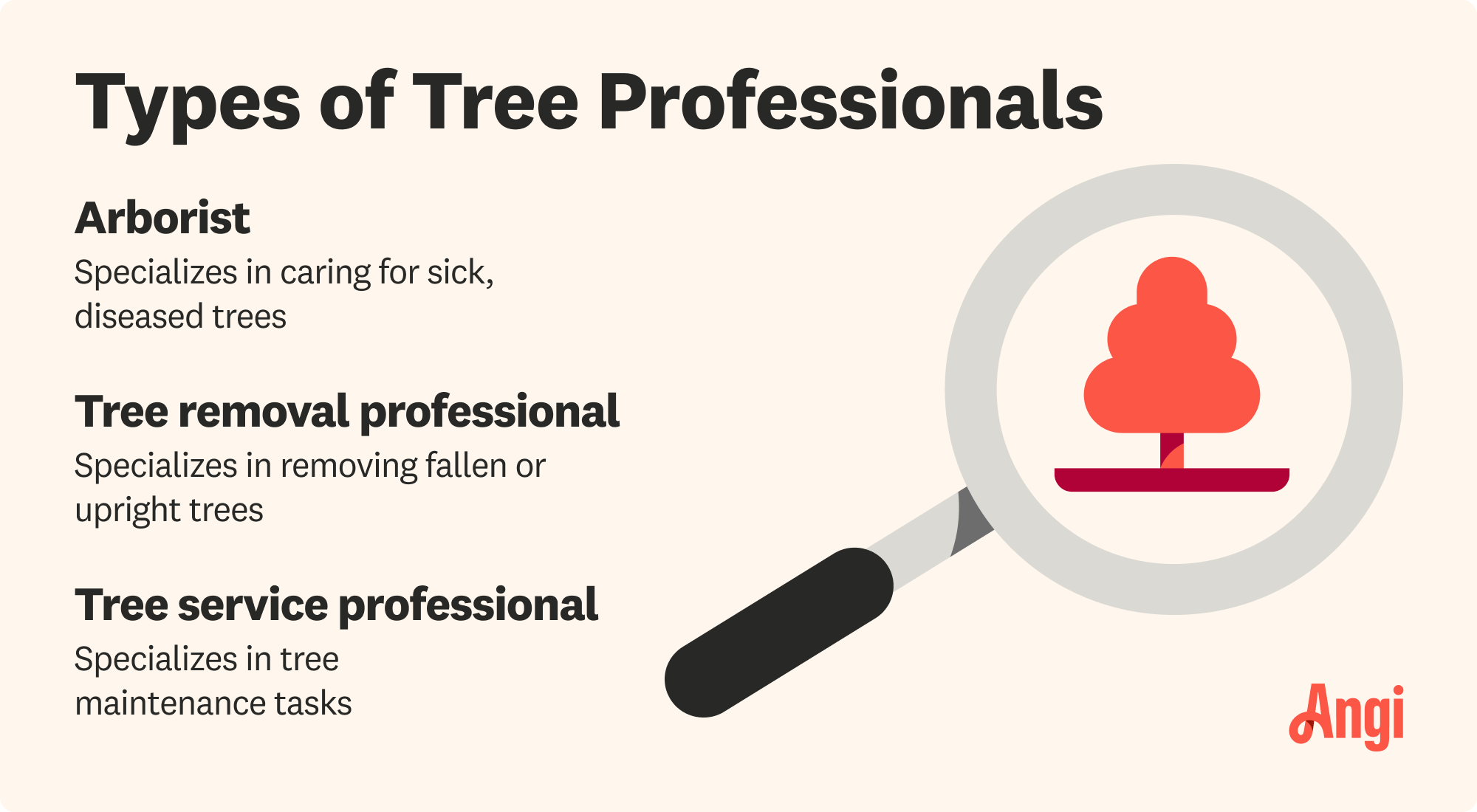
Discover what the current average tree removal cost is based on different factors to know how much it will cost to take care of a dead or troublesome tree on your property.
Is it time for removal, or are you barking up the wrong tree?


The best time to cut down a tree is in winter or early spring, when trees and other plants are dormant.
There are many reasons to cut down a tree, from safety concerns to tree health.
Cracks, seams, dead branches, or large wounds are signs you should remove your tree.
Saying goodbye is never easy, especially when it’s to your faithful oak tree that’s been around since you moved in. Unfortunately, though, there are times when it’s necessary for your landscape and your safety. It can be difficult to determine when to cut down a tree.
So, here is a list of the top signs your tree needs to be cut down.
When trees get close to your home or other structures around your property, this can lead to serious issues. Is the tree really close to your home? There’s a possibility that its roots can uplift the foundation, so you’ll want to address the issue immediately.
Even if the tree isn’t right up against your house, branches touching the siding can cause mold growth. Keep up your tree care routine and regularly trim to avoid any trouble. Trees can also block the sun from reaching a portion of your home and cause other mold problems, which can be pretty costly to fix.
In general, a tree should be planted between 10 to 30 feet away from your house to avoid potential damage.
| Tree Height (In Feet At Full Maturity) | Distance From House (In Feet) |
|---|---|
| Under 30 | 10 |
| 30-70 | 15-20 |
| Over 70 | 20-30 |
A diseased tree will often reveal telltale signs. Diseases don’t just interfere with your tree’s beauty—they can also weaken the tree, making it more prone to falling down or losing limbs despite your best tree care habits. In some cases, the disease is manageable, and you may be able to remove the affected portions through tree trimming.
However, if the disease is severe, you should look into cutting down the tree. An ISA-certified arborist or a tree removal company can assess the tree and how badly the disease affects it.
Noticing cavities or hollowness in a tree trunk is usually bad news. These signal problems with the tree’s structural integrity, meaning it’s on the decline.
Even with the best tree care routine, a weak trunk can’t support all its limbs properly, which could spell danger for your home or your family. Branches or even large limbs could fall at a moment’s notice.
Dead branches here and there are part of a tree’s natural growth cycle. However, if you can’t seem to keep up with the dying portions of your tree, this is a bad sign.
Large, dead branches near the crown of a dying tree are especially dangerous, as these can fall hard and suddenly. As a general rule, if over half of the tree is in bad shape, then it’s time to take it down.

Does looking at the tree make you a little nervous? That instinct usually isn’t wrong. When a tree starts to gradually lean to one side, or just change its shape, there’s a chance it could fall.
Since this can do some severe damage to your home, it’s best to err on the side of caution and get rid of it.
Even if the tree itself doesn’t come down, large branches can do considerable damage if they fall. If you notice large portions of the tree that are leaning or sagging, don’t wait to remove them.

Storm damage can seriously traumatize a tree—and it may or may not be repairable. When this happens, you may be able to trim and prune off the damaged portions.
However, if you’re unhappy with the tree’s look afterward, you might decide to have it taken down. A local tree service can evaluate the damage and help you save the tree if it’s possible.
A tree with no fresh, new growth visible is likely in bad shape. Weak and brittle branches, dead or browning leaves, and a trunk that isn’t what it used to be are all signs that a tree is beyond repair.
Compare the tree to the other ones around your property—how does it stack up in terms of branch and leaf health? If the other healthy trees around are thriving while this one seems to be dying, removing your dead tree may become your only option.

A dead tree should not remain on your property, even if it appears structurally sound. Dead trees can become a bed and breakfast for bugs. More often than not, the constant munching will eventually take the tree down.

If you’ve done your due diligence and had multiple experts out to take a look, chances are the majority verdict is the correct one. Even if it hurts to get rid of the tree, always listen to the professionals.
Homeowners are responsible for their own trees, so if anything does happen, you might be liable for the damage.
There are many types of insects that can harm trees. However, wood-burrowing bugs typically cause the most damage and can kill trees. Bark beetles, emerald ash borers, and locust borers are just a few invasive species that cause detrimental damage to trees.
Discolored leaves, holes in the bark, or sawdust can be signs that a tree needs to be cut down due to insect infestation. Have your tree checked by an arborist to determine if it’s too late to save it.
Another factor in when to take a tree down is if it’s an invasive species. Trees that are not native to the area can grow more rapidly and choke out other trees and plants from getting water, nutrients, and sunlight.
This has a significant impact on the ecosystem and affects wildlife. Birds and critters that depend on native trees for food and shelter can suffer because of the invasive tree species taking over.
If you aren’t sure if the species is invasive, a certified arborist can identify the tree type and if it needs to be cut down.
Most trees can last decades (if not centuries), but that doesn’t mean you have to keep it. Personal taste and preferences change over time. That massive oak tree that your kids used to climb on may now be a burden to maintain as you age in your home. Talk to a professional landscaper about your options for keeping or removing a tree and how that fits into your broader vision for your yard.
Aren’t sure if you need to cut down a tree? Here are a few questions to decide if the tree is a problem or not:
Is this an invasive or undesirable tree? Does the tree have a bad impact on the local ecosystem, or does it threaten to spread and damage natural plant life? Those are signs that a tree should be removed.
Does the tree have a fungal or bacteria disease that can spread? Tree diseases can infest nearby trees and cause major problems over time. It’s best to remove an early-infected tree to curb the spread, especially if few other treatments exist.
Is there significant trunk damage? Trunk damage is an indicator of overall health. Large amounts of trunk damage or many trunk wounds suggest the tree may not survive.
Does the tree have dead or dying branches? Lots of dead branches can indicate a tree can’t be saved. Pay attention to what side dead branches are on—if only one half the tree is dead, it could be a serious fall risk.
Is the tree leaning? Watch for struggling trees that are leaning. That not only indicates a compromised root system, it also signals the tree is ready to fall.
Is the tree near rooflines, windows, or power lines? A dying tree is often a fall risk. If it could cause serious damage if it falls, you should remove it for safety’s sake.
Is the tree rotting or hollowed out? Signs of rot or a hollow tree indicate it’s in danger of falling. You might see these symptoms in combination with new growth at the base of the tree, which can indicate the tree has “given up” on the main trunk, but it still needs to be cut down.
Is the tree impacted by any local laws or requirements? City or local laws may limit how close trees can grow to public sidewalks and power lines. In some cases, trees may be protected by local ecology or historical preservation laws. Check the tree’s legal status before you cut it down.
If you’re wondering how to cut a tree down safely, the best way is to hire a pro to do the job. Whether you need emergency tree removal, proactive service, or just an evaluation from a certified arborist, it’s important to seek an experienced professional.
Trees are unpredictable, so large removal jobs don’t make a safe or suitable DIY. Get in touch with a local tree expert to learn more about your options.
A tree removal can cost anywhere from $200 to $2,000, with average prices around $750. Total costs depend on the tree’s type, size and location, along with its current health status. In some rare cases, a tree encroaching on public property or easements will be removed for free, but usually you’ll have to pay for it.
For an accurate quote, estimate your tree’s height and age before contacting local tree removal services. Check to see if stump removal is included in the price, or if that’s something you’ll need to budget for separately.
From average costs to expert advice, get all the answers you need to get your job done.

Discover what the current average tree removal cost is based on different factors to know how much it will cost to take care of a dead or troublesome tree on your property.

Trimming your bushes is one of the less costly aspects of landscaping, and it’s helpful to bundle many trimming services together to save money.

Find out how much it costs to plant a tree based on the number of trees, their size, where you want to plant them, and DIY versus professional costs.

Japanese flowering cherry trees require some know-how to keep them thriving and disease-free. Read on to learn how to grow flowering cherry trees.

If your palm tree looks dead, there are several ways to bring it back to life. Our guide will show you what to do with a dead palm tree.

Trimming shrubs and bushes takes time, patience, and a little sweat equity. Our guide will show you how to trim shrubs and bushes properly.